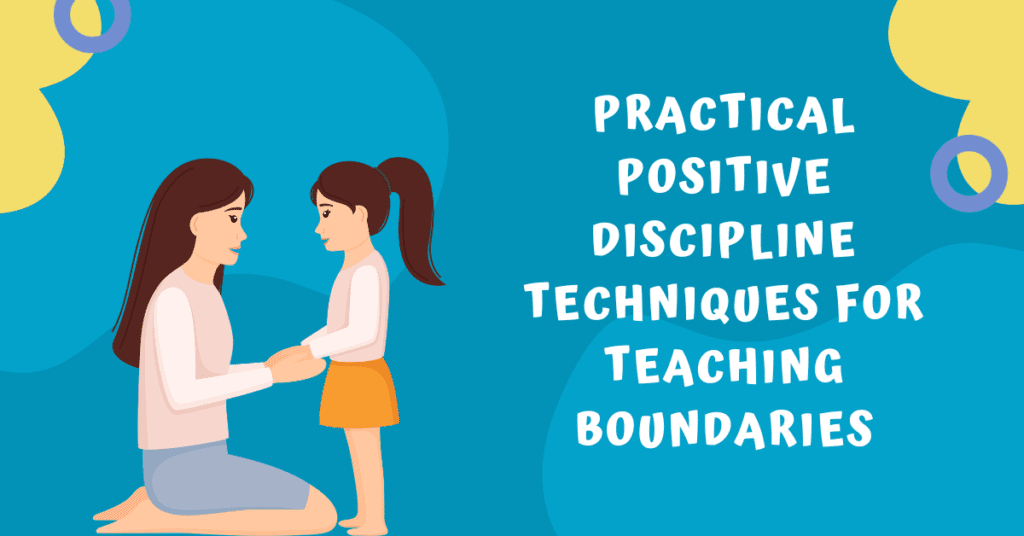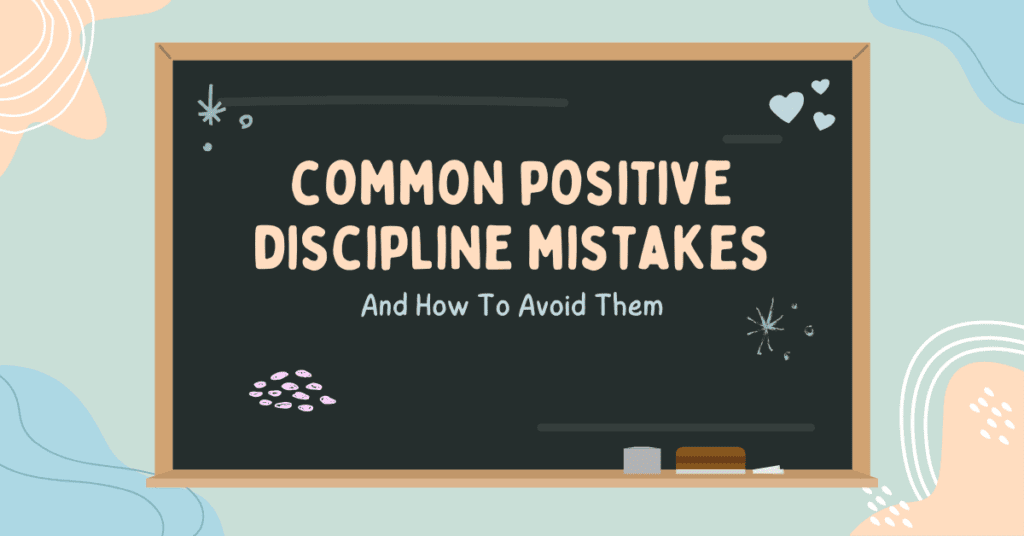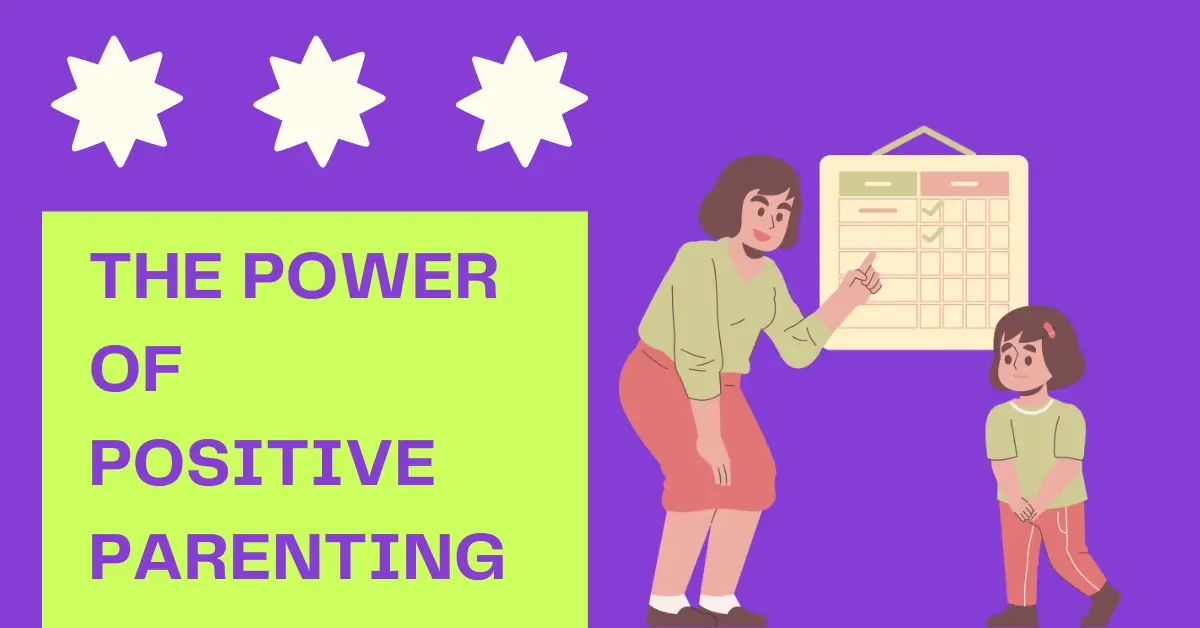Positive discipline is a highly effective method that parents, caregivers, and educators can utilize to guide children’s behaviour while simultaneously teaching them self-control and responsibility. It emphasizes mutual respect, encouragement, and solutions rather than focusing on punishment. Central to this approach is the establishment and reinforcement of boundaries, an essential part of teaching children to navigate their world safely and respectfully. This article will delve into the power of positive discipline and how it can be leveraged to teach children about boundaries.
Understanding Positive Discipline
A. Definition and Characteristics of Positive Discipline
Positive discipline is an approach to parenting and teaching that fosters mutual respect and uses positive instruction to guide children’s behaviour. It hinges upon the belief that children can and want to behave well and that they learn best when they are treated with kindness and understanding. This method discourages the use of punishment and instead encourages teaching and learning through cooperation, constructive feedback, and problem-solving.
B. The Psychology Behind Positive Discipline
The psychology behind positive discipline stems from Alfred Adler’s theories, a well-known psychologist and founder of Individual Psychology. Adler believed in the inherent social interest in people, including children, meaning that we all have a natural desire to belong and to feel significant. Positive discipline helps fulfil these needs by providing a sense of connection and capability, which in turn promotes better behaviour.
Positive discipline aligns with the principles of social learning theory, which emphasizes the influence of observational learning and modelling. When adults model respect, kindness, and boundary-setting, children are more likely to adopt these behaviours themselves.
C. The Benefits of Positive Discipline in Teaching Kids
Positive discipline has numerous benefits for both the child and the adult. For the child, it fosters self-discipline, responsibility, problem-solving skills, and a positive self-concept. It promotes respectful communication, improved cooperation, and a sense of security.
For the adult, positive discipline can reduce stress and conflict, build a more harmonious relationship with the child, and increase confidence in their parenting or teaching skills. Moreover, it allows adults to be role models, demonstrating how to handle frustration and conflict effectively, and how to set and respect boundaries.

Why Boundaries Are Important for Kids
A. Explanation of the Concept of Boundaries for Children
Boundaries, in the context of child development, are rules or guidelines set by parents or caregivers that define acceptable behaviour. They can involve various areas, such as physical boundaries (how one person may touch another), emotional boundaries (how we respect each other’s feelings), and time boundaries (delineating between work time and playtime, for example). They provide a structure that helps children understand their responsibilities and the consequences of their actions.
B. The Role of Boundaries in Children’s Emotional and Social Development
Boundaries play a crucial role in a child’s emotional and social development. They offer children a sense of security and predictability, helping them understand what to expect from their environment and from others. Boundaries can help children learn self-control, respect for others, and a sense of social propriety.
Moreover, boundaries can foster a child’s emotional intelligence. When a child understands that certain behaviours are not acceptable, they begin to develop empathy towards others. This empathy is foundational to the development of healthy relationships in later life.
C. The Consequences of Lack of Boundaries
The absence of clear boundaries can result in confusion, anxiety, and behavioural problems in children. They may struggle to regulate their emotions and develop unhealthy social behaviours such as aggression or defiance. Moreover, children without clear boundaries may grow up lacking respect for other people’s boundaries and may struggle with understanding societal norms and expectations. Thus, setting boundaries is not just about managing children’s behaviour in the present, but about equipping them with the tools they’ll need to navigate the world as they grow older.
Incorporating Positive Discipline Strategies to Teach Kids Boundaries
A. Setting Clear and Consistent Boundaries
Clear and consistent boundaries are key to effective discipline. Children should understand what the rules are, why they are in place, and what the consequences will be for breaking them. Make the rules together when possible to ensure your child feels involved in the process. Reiterate these boundaries regularly and maintain them consistently to avoid confusion or manipulation.
B. Using Natural and Logical Consequences
Natural and logical consequences are integral parts of positive discipline. Natural consequences are the outcomes that naturally follow certain actions, like feeling cold after refusing to wear a jacket. Logical consequences are outcomes designed by the parent or caregiver to logically follow a child’s inappropriate action, like losing screen time for not completing homework. These consequences allow children to learn from their mistakes in a safe and structured environment.
C. Encouraging Autonomy and Decision-Making within Limits
Positive discipline is not about control, but about teaching children to control themselves. Encourage autonomy by allowing children to make decisions within set boundaries. For example, a child might choose their own clothes for the day or select a snack from a range of healthy options. This approach fosters decision-making skills, promotes responsibility, and makes children feel valued and capable.
D. Modeling and Respecting Boundaries Ourselves
Adults play a crucial role in teaching boundaries by setting a good example. This can involve demonstrating respect for others’ personal space, maintaining consistent routines, or showing how to handle frustration calmly. Importantly, adults should also respect the boundaries they set for children and avoid overstepping or disregarding these boundaries themselves. When children see the adults in their life modelling boundary-respecting behaviour, they’re more likely to internalize these habits.

Practical Positive Discipline Techniques for Teaching Boundaries
A. Effective Communication Strategies for Setting Boundaries
Communication is key in setting boundaries. Be clear, concise, and calm when communicating the rules and their consequences. Avoid using negative language or shouting. Instead, use positive, encouraging language to express expectations. It’s also beneficial to listen to your child’s feedback about the boundaries and involve them in discussions about possible adjustments.
B. Discipline Techniques That Promote Learning Rather Than Punishment
Techniques such as time-outs, removing privileges, or applying natural and logical consequences can be effective when used correctly. The focus should always be on helping the child understand the impact of their actions and learning how to make better choices in the future. Punishment that focuses on shaming or causing fear is counterproductive and can damage the child’s self-esteem.
C. Age-appropriate Boundary Setting
It’s important to set boundaries that are suitable for the child’s age and developmental stage. For example, toddlers might have boundaries around touching certain objects or respecting nap times, while teenagers might have boundaries around screen time and curfews. Understanding the child’s capacity for self-control and decision-making at each stage will help set realistic and effective boundaries.
D. Handling Resistance to Boundaries
Resistance to boundaries is a normal part of child development. Validate your child’s feelings when they’re upset about a boundary, but remain firm. It’s crucial to consistently apply the agreed consequences when boundaries are violated. With time, patience, and consistent reinforcement, children will learn to accept and respect the boundaries set.

Common Positive Discipline Mistakes and How to Avoid Them
A. Identifying Common Mistakes in Implementing Positive Discipline
Inconsistency
Inconsistency in setting and enforcing boundaries can lead to confusion and increased boundary-pushing behaviour in children.
Setting Unrealistic Boundaries
Parents may set boundaries that are not age-appropriate or are unreasonably strict, which can lead to frequent violations and frustration.
Negative Communication
If the boundary-setting is accompanied by yelling, criticism, or negative language, the child may focus more on these negative emotions rather than the learning experience.
B. Suggestions for Overcoming These Challenges
Establish Consistency
Consistently uphold the boundaries and the consequences for crossing them. Cooperation between parents and caregivers is crucial to ensure that everyone is on the same page.
Set Realistic and Appropriate Boundaries
Understand your child’s developmental stage and capabilities. Set boundaries that challenge them but are still achievable.
Use Positive and Clear Communication
Convey your expectations clearly and positively. Replace criticism with guidance and encourage dialogue about boundaries.
C. Emphasizing Patience and Consistency in the Application of Positive Discipline
Positive discipline requires patience and consistency. Change does not happen overnight. Parents and caregivers need to be patient with both themselves and their children during this process. Remember, the goal is not to control the child but to teach them self-control and responsibility, which are skills that will serve them for a lifetime.
Conclusion
Teaching kids boundaries through the lens of positive discipline is a powerful strategy that nurtures mutual respect, encourages self-control, and fosters decision-making skills. The journey might seem challenging at first, particularly when met with resistance or when old habits try to creep back in. However, the payoff in the form of children’s emotional growth, social skills, and overall well-being is undeniably rewarding.
Consistency, patience, and effective communication are the cornerstones of positive discipline. Remember to model the behaviours you wish to see, involve your child in setting boundaries, and use natural and logical consequences to encourage learning.
Ultimately, positive discipline is not just about managing behaviour. It is a nurturing approach that equips children with valuable life skills and helps to cultivate their sense of responsibility, empathy, and respect for boundaries. It’s an investment not only in your child’s present but also in their future, empowering them to become confident and respectful individuals.

